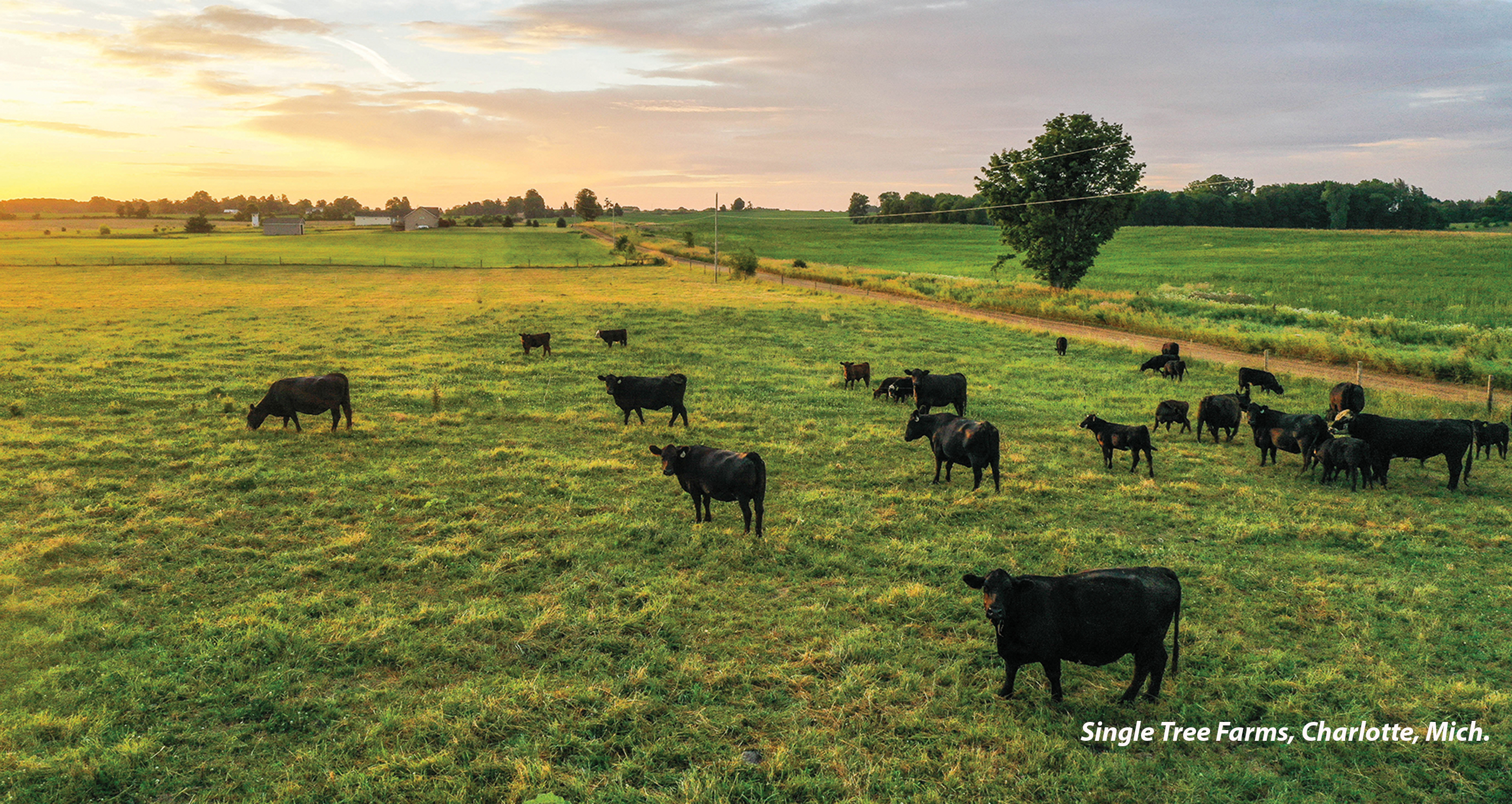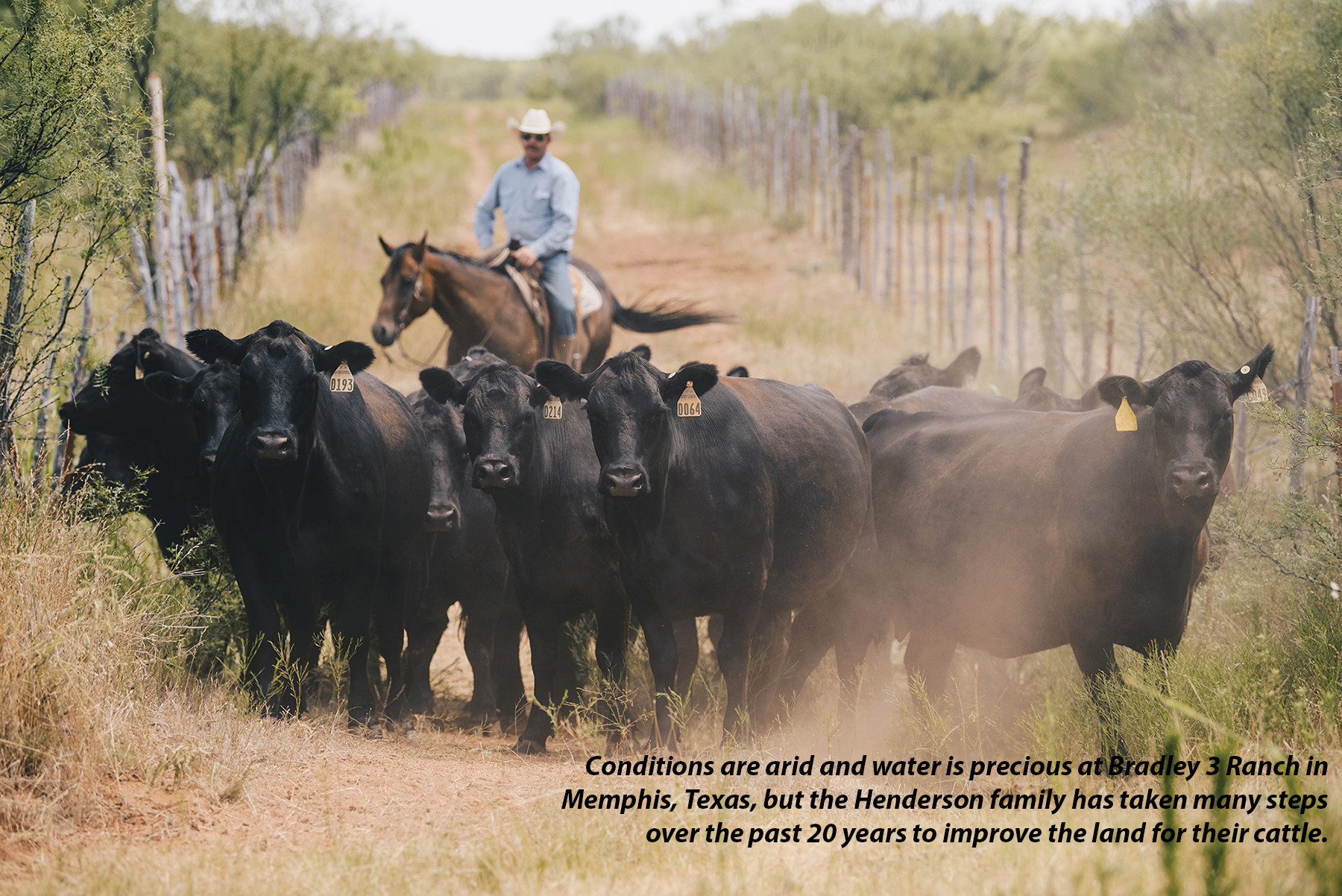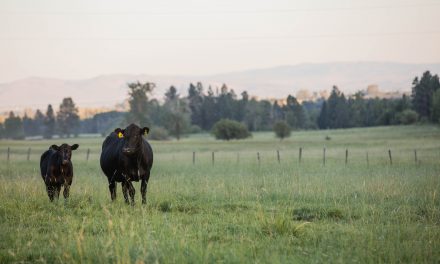
Today’s farmers and feeders focus on efficiency, quality, stewardship and education
“Cow farts are not a thing.”
That’s probably news to most consumers, who have been hearing for years that animal agriculture cattle, in particular is largely to blame for climate change. Take, for example, a February 2019 CNBC story, which stated: “Methane gas produced by bovine flatulence contributes a significant portion of the greenhouse gases contributing to global warming, according to the United Nations.”
But according to Dr. Sara Place, formerly the Senior Director of Sustainable Beef Production with the National Cattlemen’s Beef Association, that’s just not true—and the real story isn’t that simple.
Place acknowledges that cattle do produce methane, but wants to clarify “it all comes out the front end.” Correcting widespread misconceptions is a big part of her work to educate cattlemen and consumers alike about the realities of beef production today.
The methane that cattle across the entire U.S. beef industry produce, she explains, represents only 2% of greenhouse gas emissions. Furthermore, it lasts just 10 to 12 years in the atmosphere—which is important to consider when the U.S. has had a relatively steady cattle herd size in recent years, and therefore, a relatively steady amount of methane being produced.
“We’re not adding any new methane into the atmosphere. It’s kind of like a bathtub, where if you have water coming in and going out at the same rate, the level is going to stay constant,” she explains. And, in fact, she adds, the number of cattle has actually been decreasing over the past several decades, so it stands to reason that cattle emissions are dropping over time, too.
Defining, and demonstrating, sustainability
While the size of the U.S. herd may be contracting, beef remains highly in demand by consumers. The balance works thanks to the efforts of farmers, ranchers, feeders and others who are raising more beef with fewer resources than ever before. It’s all part of a focus on sustainability.
More than the buzzword it’s become, sustainability means many things, Place explains. “It’s economic viability, it’s social responsibility and doing right by the community, and it’s environmental stewardship. It’s all three of those areas together.”
Organizations like the U.S. Roundtable for Sustainable Beef, of which the Certified Angus Beef ® brand is a part, help ensure that stakeholders across the beef community are actively engaged.
Sustainability is part and parcel of life on the farm—a reality that farmers and ranchers are finding value in communicating. Far from a one-size-fits-all checklist of “sustainable measures” to mark off one by one, they make decisions specifically for their unique environment and operation.
For example, Chris Ulrich raises Angus cattle with his family near Allenwood. Theirs is one of an estimated 87,000 working farms in the Chesapeake Bay watershed, so runoff is a big consideration.
“Our farm has a lot of rainfall, and as a child, I realized the water that passed by the streams that are in our pastures ends up in the Chesapeake Bay about two days later,” he says. “It’s pretty easy to see that we have a profound impact on the area.”
Ulrich says the first thing they decided to do to minimize or eliminate runoff was get the cattle out of the streams.

“Cattle and streams, they don’t belong together,” he says. “We fence them out. We put fences up and down both sides of the stream, and plant trees there, too. What we’ve found is a lot of the runoff that comes off our pastures gets trapped, and those nutrients get used up by the trees, and keeps it from going into the stream.”
Encouraging native species
Halfway across the country, in the central Panhandle of Texas, the concerns and considerations are very different for rancher James Henderson.
“When we talk about stream beds in our area, we say they blow more than they flow,” he says of the arid, drought-prone climate. “In 2009, ’10 and ’11 combined, we had a total of nine inches of rain.”
He recalls a pivotal moment back in 1995, when a range specialist visited the ranch and concluded it was “the most understocked, over-grazed ranch I’ve ever been on.”
“That’s not what you want to hear as a rancher,” Henderson remarks. “So we sat down, looked at that, and asked ourselves why.” The result: a 20-year plan for resources. Their goal was to have nowhere on the ranch where cattle had to travel more than half a mile for water, while in that region, two miles to water isn’t uncommon.
For Henderson, that meant controlling invasive brush like mesquite and juniper, which not only encroach on grazing land but also use up more than their share of valuable water. Instead, Henderson planted more native grasses, which use less water but had been displaced by brush. It’s working, he reports, with more grasses and cattle thriving on the land than ever before.
Feeding more, with fewer resources
Because cattle are so versatile, they thrive in environments as different as Ulrich’s and Henderson’s. Consumers may not realize it, but due to their unique physiology, cattle are also incredible upcyclers.
“They’re this vessel for transforming all of these plants we can’t eat, from landscapes where we can’t grow plants we would want to eat, into a really high eating experience and nutrition,” Place explains. “The major inputs that go into producing beef are carbon dioxide out of the air, sunlight and rainwater, mostly. It’s kind of cool to think that beef is solar energy, in a much more delicious form.”

Furthermore, cattle eat things that aren’t in competition with the human food supply, she notes.
Cattle feeders like Hy-Plains Feed Yard in southwest Kansas take it one step further. Rather than just feed cattle, they’re researching what and how they feed, with a goal of raising more beef with fewer resources.
“We’re studying it, and we’re trying to see how we can make those cattle more efficient,” says Tom Jones, Hy-Plains co-owner and manager. His team’s goal is to raise cattle that grade Prime on 60 or 80 days of feed instead of the usual 140, and to cut down on their water use. “That’s part of our sustainability story.”
Another part is working with the next generation. Jones proudly describes an internship program that attracts students from schools including Iowa State and Kansas State University.
“They’re learning by working with a lot of different types of producers,” he says. “This is the future coming up, and in our industry, we need more young people.”
A research center that opened in 2017 has proven to be a valuable resource in educating students from elementary school, 4-H groups and at the university level, in addition to the communal office space of the veterinarian, reproductive specialist, research director and other experts on staff.
“We’re trying to promote our industry,” Jones says. “A lot of the kids who visit us aren’t ag kids but city kids. We’ll spend hours with them, all day long, just going through different phases of it and explaining what the cattle business is like.
“We do have a great story to tell. And if we can study our lessons we can make a huge difference.”
BUILDING BRIDGES
It’s one thing for these everyday environmentalists to make sustainability a priority in their daily work. But like the ripple effect of a single drop of water, there’s a lot of collective power in folks like Ulrich, Henderson, Jones, Place and so many others sharing their experiences, their research and most of all their stories with a wider audience.
“These misconceptions around beef and beef production are only going to persist as the marketplace continues to evolve,” says Melissa Brewer, vice president of communications for the Certified Angus Beef ® brand. “It’s vitally important that we as a brand help facilitate these conversations and connect our partners, their customers and consumers with those who understand the reality of the beef community firsthand.”
Often, it’s about creating connections and building relationships.
“When people get the chance to meet a farmer and ask them questions, they usually realize they care about the same things,” says Brewer. “Everyone cares about what they’re feeding their family. People often just want to know that farmers really are doing the right things, and care about their cattle and their land.”

That’s why brand partners and influencers are invited to spend time on real working farms as they learn more about the brand and the beef community, so they have the opportunity to ask questions and gain a greater perspective that they can take back to their teams, their customers or their followers. Supporting these in-person opportunities are a variety of resources available to brand partners like fact sheets, videos and other takeaways that help share the ranching story and dispel myths.
“Farmers have a great story to share, and consumers are hungry to know more,” Brewer says. “With that comes the obligation and opportunity to learn more from each other and open up more dialogue, upholding our promise of delivering the very best beef.”
Place concurs.
“We can move quality and efficiency together. It’s not that as we become more efficient, we’re sacrificing these other areas. That’s really what sustainability is. It’s about being good businesspeople and doing right by the environment, and doing right by the community.”





